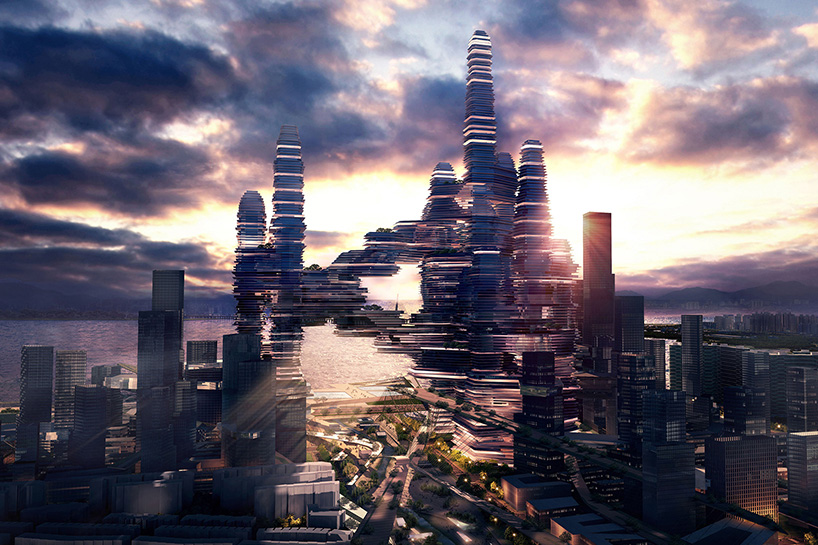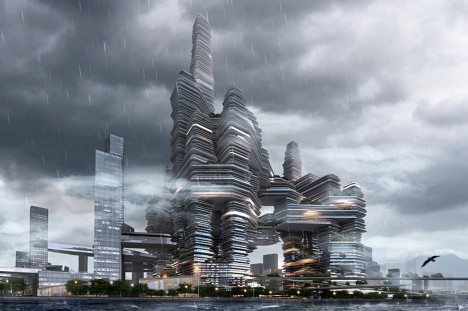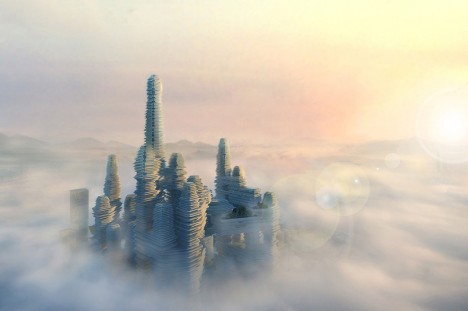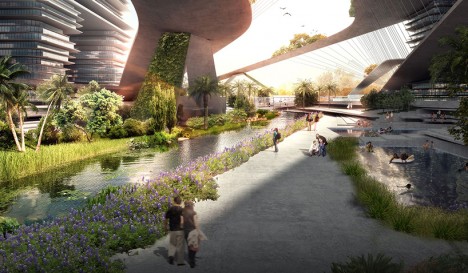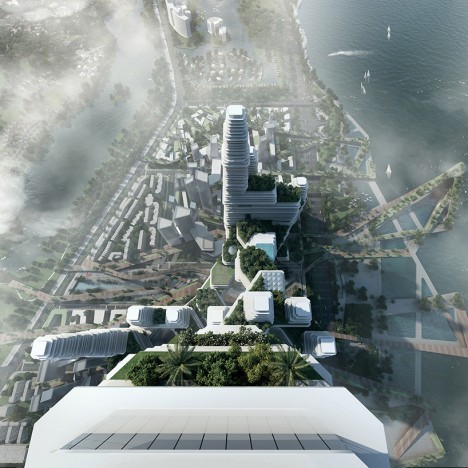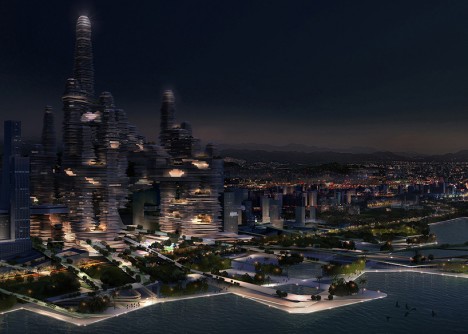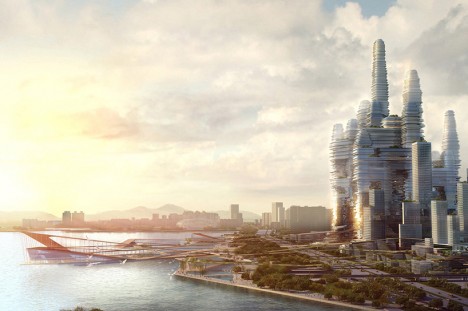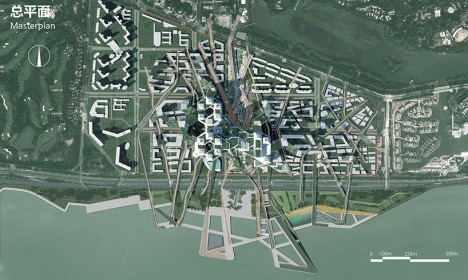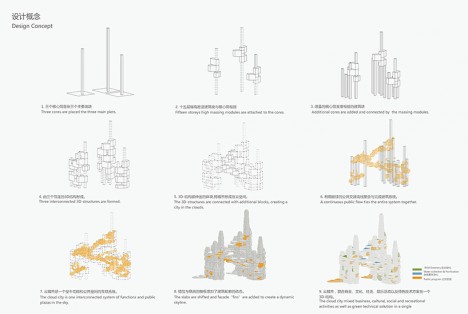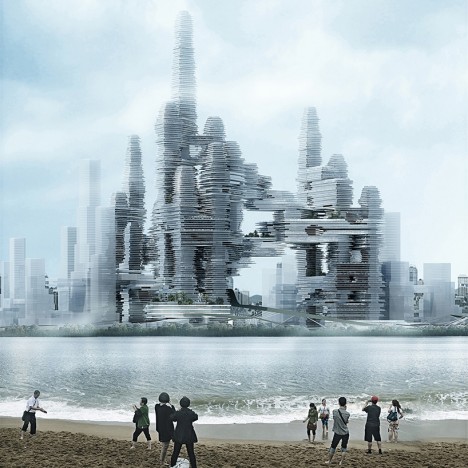A complex spanning in seemingly all directions, this sky-oriented, cloud-shaped, forward-thinking design has just won the Shenzhen Super City Competition in China. It represents a critical way of rethinking (and reshaping) what it means to build vertically in urban environments, and creating horizontal connections between those upward structures.
Dubbed Cloud Citizen, this winning proposal was a collaboration Urban Future Organization and CR-Design in conjunction with a team from Chalmers Technical University.
The design is aimed at tackling the Shenzhen Bay, an area adjacent to Hong Kong facing long-standing and still-growing issues of urban density and pollution. Of course, the visually-striking aspects also help form an iconic identity from this mega-structure as well.
The idea involves suspending residential, commercial and institutional nodes of activity in the air, interspersing homes with cultural facilities and leisure centers and allowing small pieces to add up to a larger whole. Instead of a straight vertical skyscraper, the organic form branches out with three-dimensional complexity to create interconnections in the sky.
Aside from its mesmerizing aesthetics, the project boasts a slew of sustainable strategies: “All 170 hectares of the 680 meter-tall super city work in cooperation with nature to make that future a reality; lush gardens act as ‘green lungs’ connecting each of Cloud Citizen’s public spaces; built-in mechanisms harvest rainwater, and power the city with solar, wind, and algae-based energy, special sections of the city will store carbon and filter particles from the air, while housing sanctuaries for plant life; localized food production modules and housing will cut down on carbon emissions from transportation. These diverse elements work together to create a harmonious vision of the cities of the future.”
